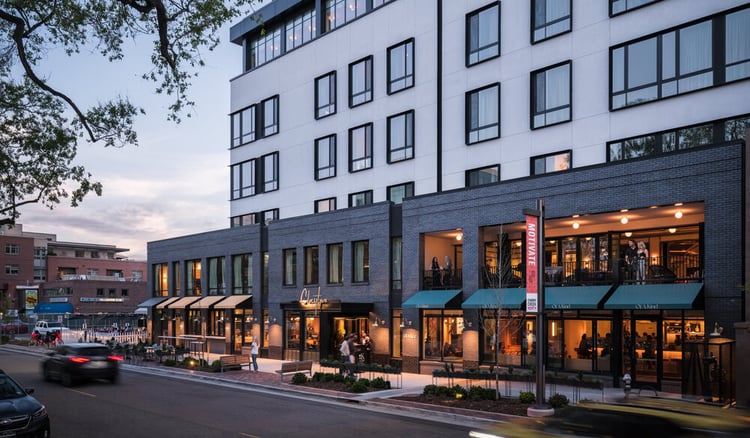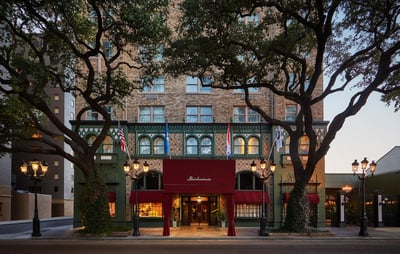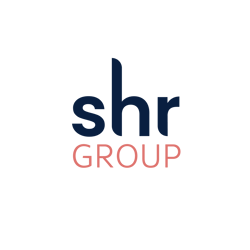
Since its inception, Chicago-based Aparium Hotel Group has set itself apart as a new kind of hotel brand—one that allows itself to venture off the beaten path, both geographically and philosophically. The hotel management company counts 10 independent and boutique properties in its portfolio, including Clayton Members Club & Hotel in Denver, Crossroads Hotel in Kansas City, and the Detroit Foundation Hotel, to name a few. Remarkably, the company opened five hotels during the COVID-19 pandemic.
The Goal: Reduce dependency on OTAs
Because independent hotels don’t have the backing of a big brand, they can be inherently challenging to market and build guest loyalty—causing many independent hoteliers to turn to Online Travel Agencies to garner awareness and drive bookings. On top of this, as Aparium opened several new properties during the COVID-19 pandemic, reliance on OTAs was somewhat higher than normal because of the need to drive awareness of the new property.
But Aparium knows the importance of not relying heavily on OTAs and instead finding the right distribution mix—in fact, the company monitors direct vs. OTA mix on a daily, weekly and monthly basis. So the company set a goal to wean off OTAs for these new properties in order to allow for more flexibility that would drive a better guest experience—and ultimately build guest loyalty.
Aparium adopted a “direct bookings are king” philosophy. Leadership shifted focus to “look-to-book” data to see potential reasons travelers were abandoning instead of booking.
To reduce dependency on third-party distribution, Aparium’s VP of Marketing Jason Pirock and team created a strategy to drive and capture more business on their direct website, specifically focusing on raising conversion rate on the property’s booking engines, powered by SHR’s Windsurfer.
The team performed a deep dive into conversion rates across the entire guest journey, starting with comparing guests booking room reservations versus restaurant reservations, and then dove into conversion rates at both the website and booking-engine level.
“We can report until we're blue in the face,” Pirock says. “Ultimately, what we’re striving for is data we can understand, use, and take action on.”
Steps to a Better Conversion Rate
 To start, the Aparium team spent much of late 2021 and early 2022 rebuilding their websites, adopting modern technology and migrating to best in class servers that could accept real-time rate and inventory changes. They were looking for ways to improve the guest booking experience while at the same time further streamlining the overall booking experience, with a specific focus on website performance and load time, which ultimately impacts conversion rate.
To start, the Aparium team spent much of late 2021 and early 2022 rebuilding their websites, adopting modern technology and migrating to best in class servers that could accept real-time rate and inventory changes. They were looking for ways to improve the guest booking experience while at the same time further streamlining the overall booking experience, with a specific focus on website performance and load time, which ultimately impacts conversion rate.
Objectives were to stand up sites that are as easy to use as possible, and ensuring the visitor is never too far away from a Call To Action (CTA). The company placed a larger focus on mobile, a channel that continues to show demand growth. Aparium partnered with SHR in its mission to convert lookers to bookers. The team credits the close relationship with SHR, who did a massive audit on all of Aparium’s properties and pointed to several opportunities to drive conversion, including:
- Shifting the focus to showing rooms and their amenities over rates and packages
- An imagery audit to find top areas of opportunity (the audit found inconsistency in image sizes, resolution, etc.)
- A deep dive into guest-facing descriptions to ensure they told the right story.
In the summer of 2021, as leisure travel accelerated, Aparium created a curated landing page that told the story of what each hotel offered on-property. The landing pages outlined how guests could plan their road trips (especially important, as many travelers were still wary about hopping on an airplane during the pandemic) and three perfect days in each destination while spotlighting the hotel restaurants, signature cocktails and events.
Then, the team’s focus turned to conversion performance metrics.
“We chose to look at things a little bit differently. The industry tends to pay attention to full-funnel conversion – they're looking at total room reservations (conversion) divided by total traffic – whereas we break it down into several categories,” Pirock says. “We want to see how many people are moving from our site to the booking engine, and then how many people are converting from there. In addition to rooms, our model emphasizes F&B as well as lifestyle activations, which means guests are coming to our sites for multiple reasons and thus are taking different journeys to explore. By breaking down their path, we can see where people are converting. This helps us better understand where to focus.”
Leaning on Data to Make Decisions
Immediately after the site audit and switchover, Aparium began reporting significantly decreased load speeds, which has helped increase the properties’ visibility on Google.
Thanks to Aparium’s renewed focus on converting direct business, conversion rates on the booking engine are rising across most properties. But measuring against industrywide benchmarks continues to prove difficult, Pirock says.
A study by h2c and Hotel Benchmark suggests the average website conversion rate for a hotel group in 2019 was 1.9%. The report found the average booking engine conversion rate – the percentage of those who navigated to the booking engine that resulted in a transaction – to be 6.8%.
Most of Aparium’s website booking engines are converting between 7-8% of visitors, Pirock says. “The IBE is pacing ahead of its goals and we’re pacing ahead of our revenue goals. Our conversion rates are really, really strong.”
But Pirock isn’t satisfied. Even at 8% conversion, he can’t help but wonder why the other 92% are abandoning their booking. Next steps, he says, are to focus on mobile conversion rates, where Aparium is seeing increasingly heavy traffic, and evaluating e-mail abandon cart technology.
“If they’re already in there, what can we be doing differently to get them to convert?” he says. “We should be able to flip the script and capture these customers.”


